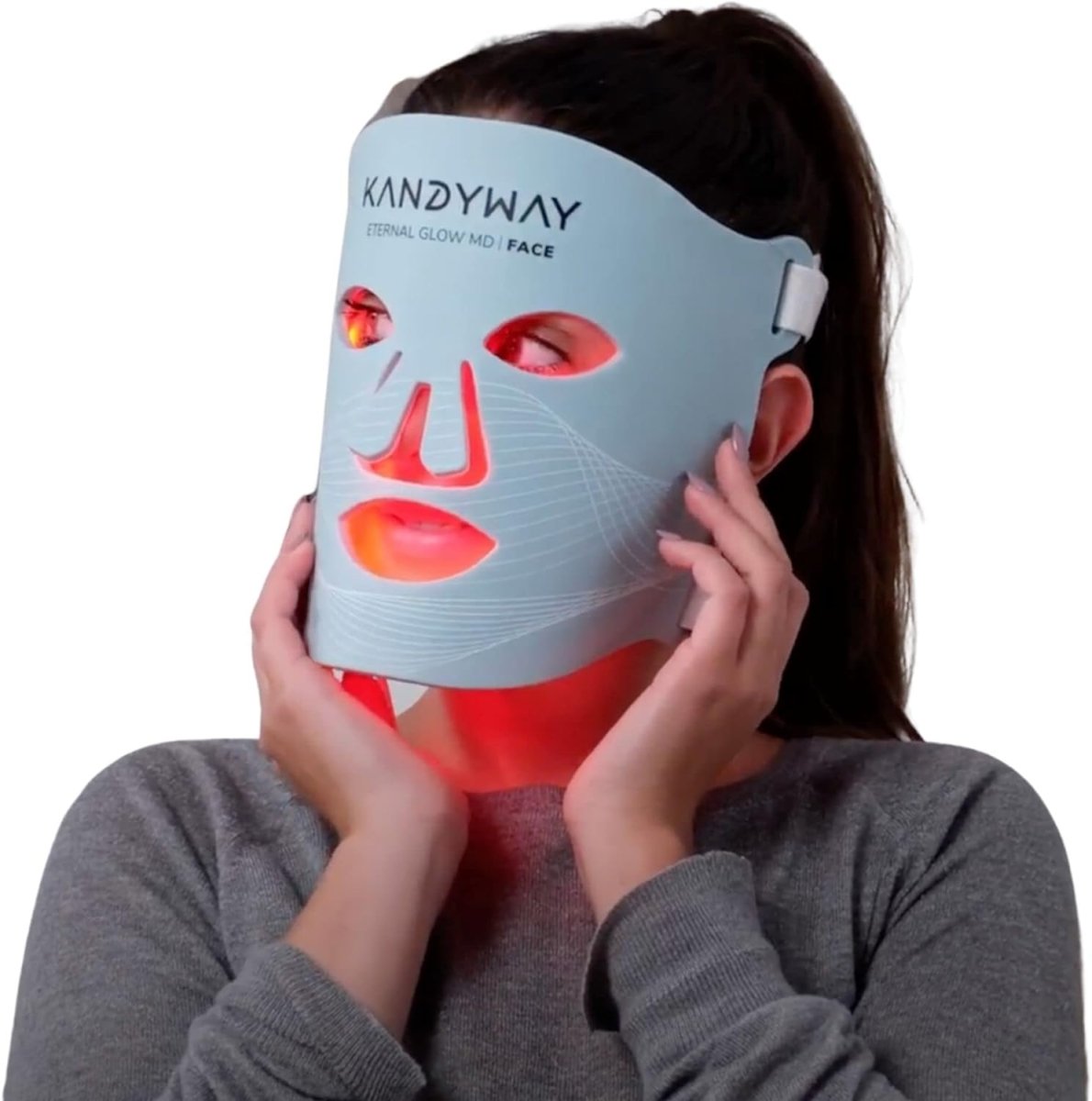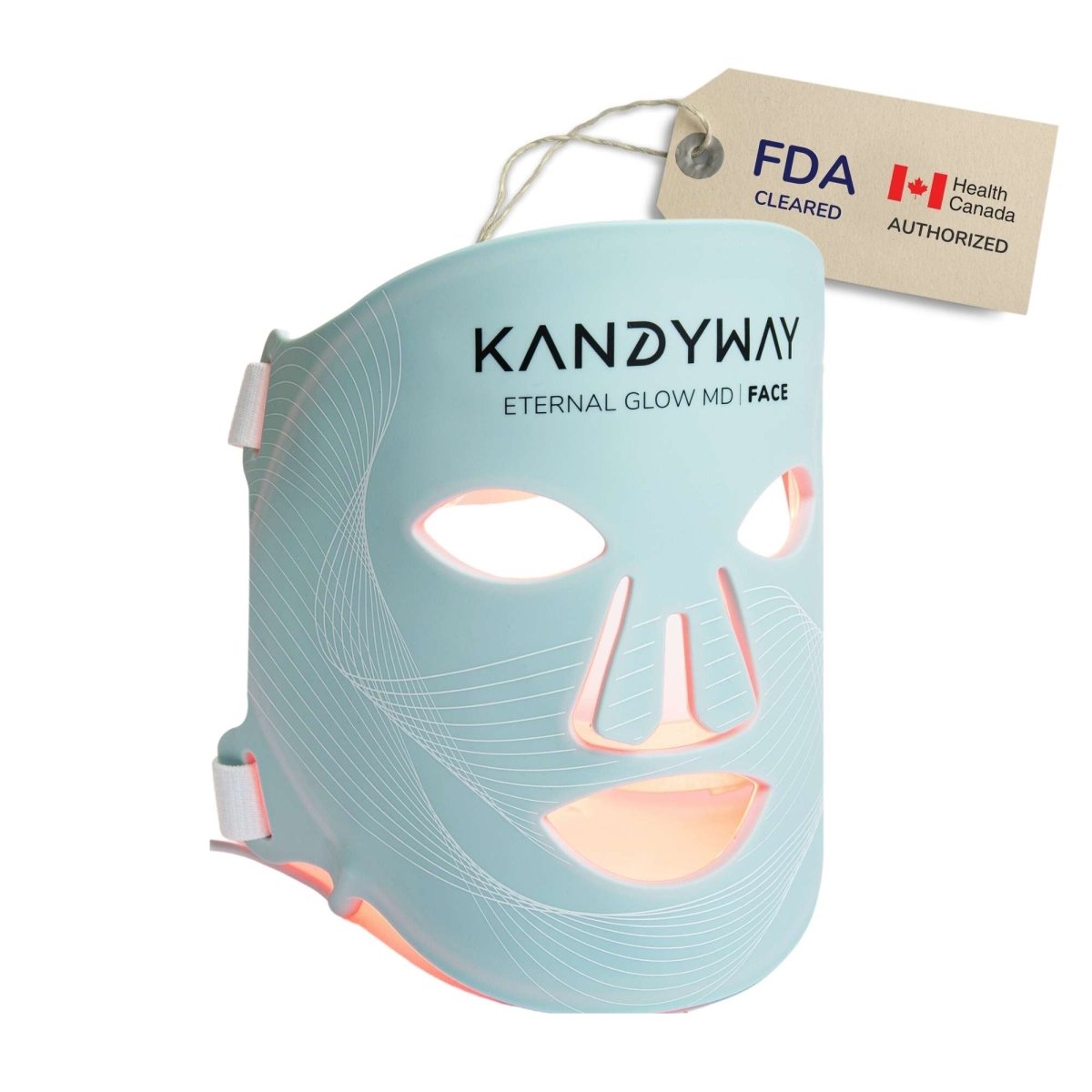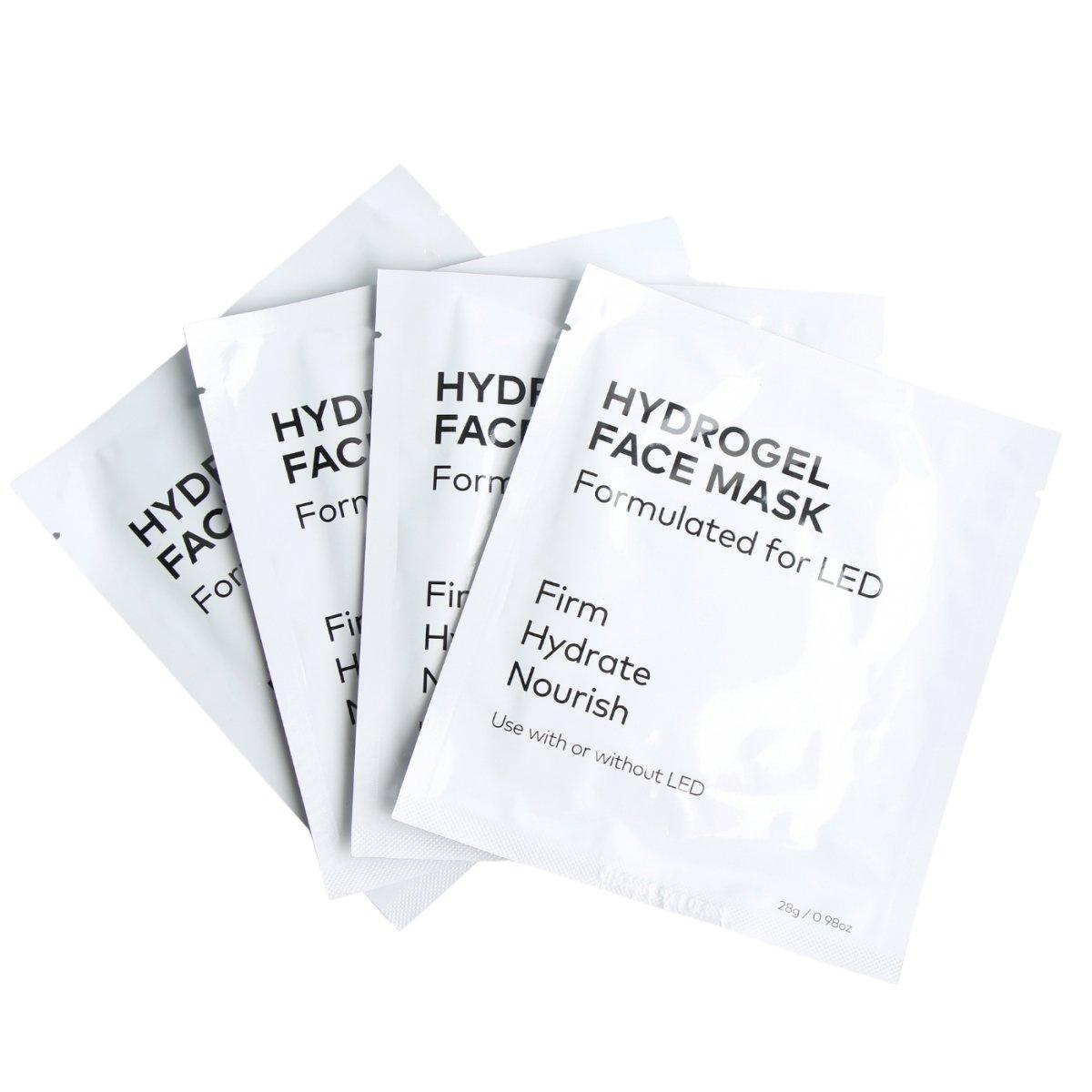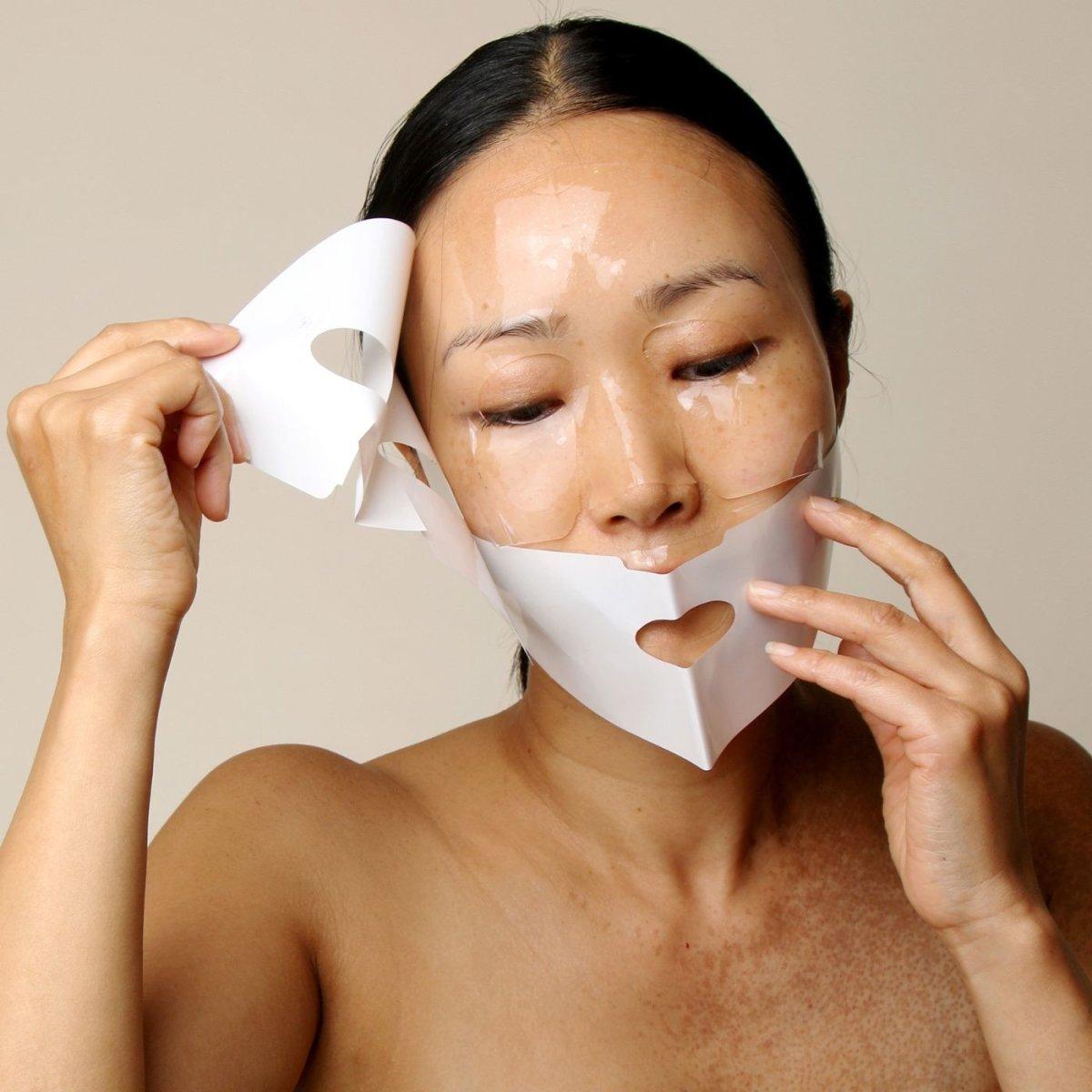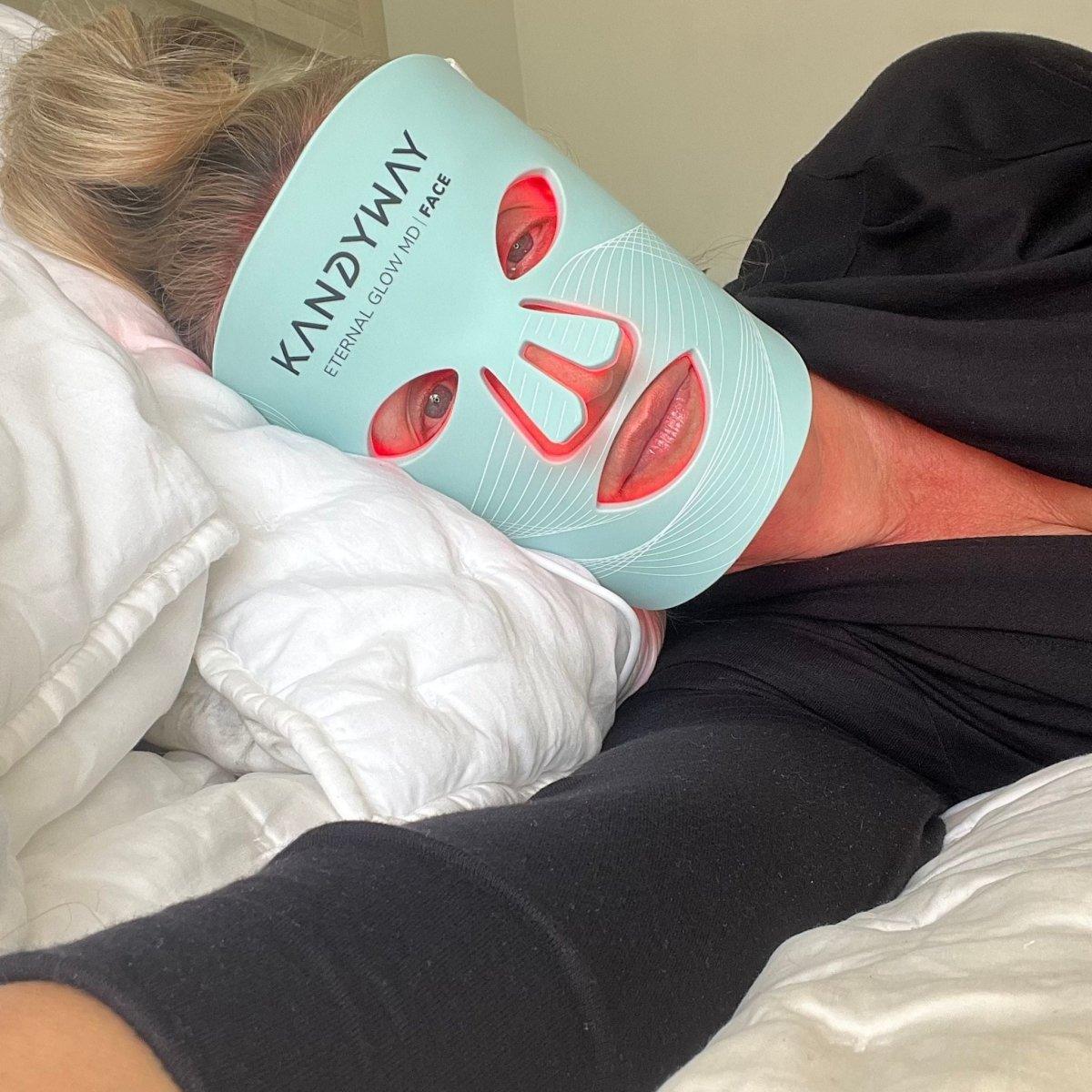Introduction
As the days grow shorter and the chill of winter sets in, many individuals find themselves grappling with a condition known as Seasonal Affective Disorder (SAD). This form of depression, which typically surfaces during the fall and winter months, can significantly disrupt daily life, affecting mood, sleep patterns, and overall well-being.
Understanding the symptoms and impact of SAD is essential for those affected, as early recognition can lead to effective interventions. Light therapy, particularly through the use of SAD lamps, has emerged as a promising treatment option, offering hope for relief and improved mental health.
This article delves into the intricacies of SAD, the mechanisms behind light therapy, and practical guidance on selecting and utilizing SAD lamps to combat this seasonal challenge.
1. Understanding Seasonal Affective Disorder: Symptoms and Impact
Seasonal Affective Disorder (SAD) is classified as a subtype of major depressive disorder and bipolar disorder in the DSM-5-TR, which requires specific diagnostic criteria related to seasonal patterns. This condition primarily manifests during the fall and winter months when exposure to natural sunlight diminishes. Individuals experiencing SAD commonly report persistent sadness, a marked loss of interest in previously enjoyable activities, alterations in sleep patterns, and challenges with concentration.
These signs can profoundly impact daily life, potentially straining relationships and diminishing overall mental well-being. Recent research suggests that most people observe some enhancement in their conditions with illumination treatment within one or two weeks of starting the intervention. Norman Rosenthal, a physician specializing in mood disorders, asserts that
Furthermore, the Seasonal Pattern Assessment Questionnaire (SPAQ) has faced criticism for its low specificity, which may lead to the misclassification of individuals without SAD as having it, thus complicating prevalence estimates. Comprehending and identifying these symptoms is essential, as it can encourage individuals to seek effective treatments, such as using a lamp for SAD in therapy, ultimately improving their quality of life. According to recent case studies, titled 'Prognosis and Long-term Management of SAD', the prognosis for those with SAD generally remains favorable with appropriate treatment.
Key factors influencing prognosis include:
-
Treatment response
-
Seasonal variation
-
Presence of comorbid conditions
Proactive measures and lifestyle modifications can help prevent relapse and maintain long-term wellness for individuals with SAD.
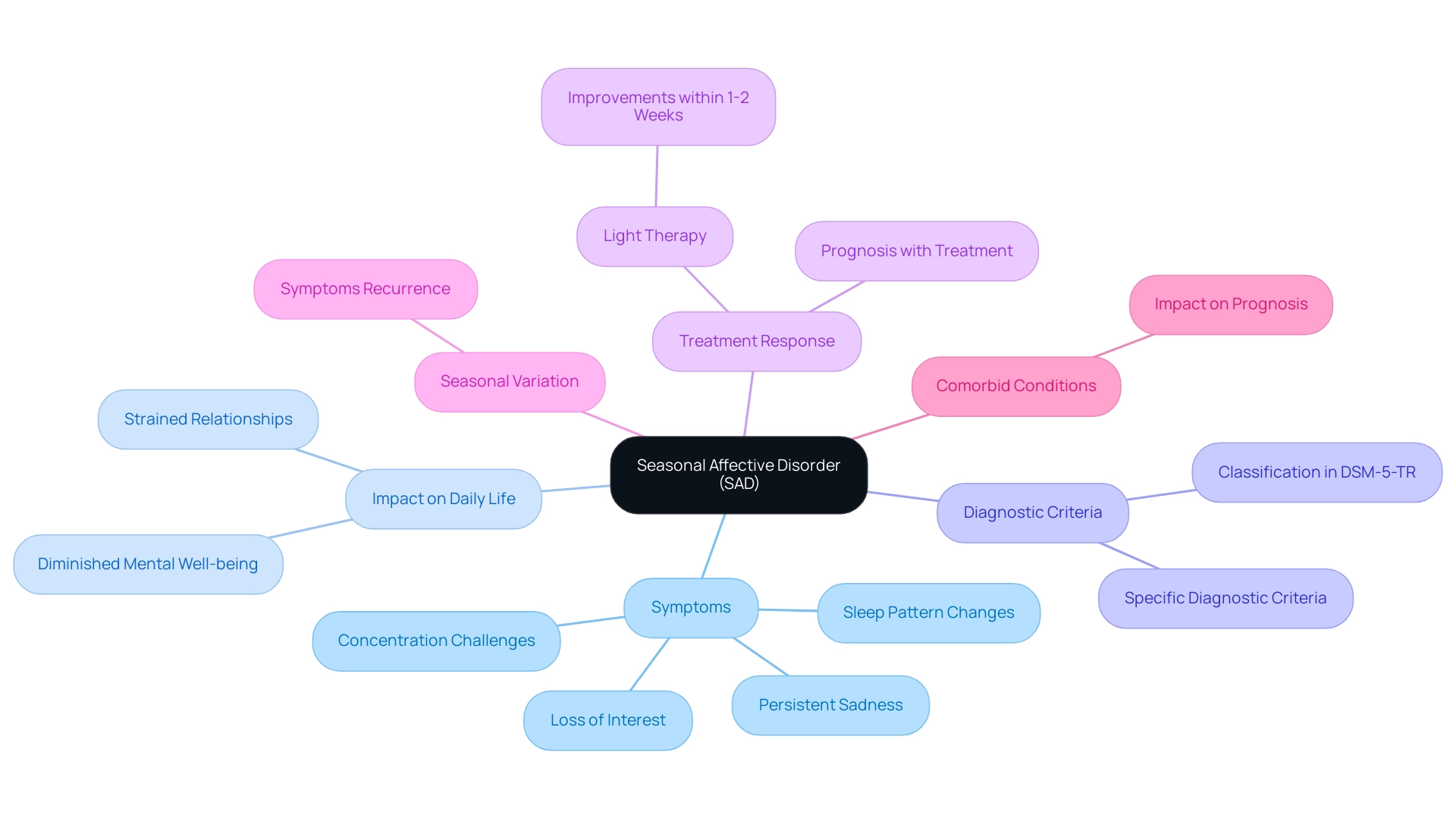
2. How SAD Lamps Work: Mechanisms and Benefits
Lamps for sad disorder operate by emitting bright illumination that closely resembles natural sunlight, effectively regulating the body's circadian rhythms and enhancing serotonin levels. This exposure to illumination triggers biochemical changes in the brain, which can lead to improved mood and emotional well-being. Recent clinical studies underscore the efficacy of the lamp for sad disorder, demonstrating that a consistent daily regimen can lead to significant reductions in depressive effects associated with Seasonal Affective Disorder (SAD).
For example, a randomized, double-blind, placebo-controlled study examined the efficacy of bright illumination treatment in addressing perinatal depression confirmed its effectiveness, indicating that mechanisms of bright illumination can reduce distress not only in perinatal populations but also in wider contexts. Moreover, studies suggest that intense illumination treatment may diminish serotonin transporter binding potential, thereby enhancing the accessibility of serotonin in the synaptic cleft, which is vital for mood regulation. Significantly, results have indicated:
-
A 52% reduction in mood issues (p=0.001)
-
An 11% enhancement in circadian rhythm consistency (p=0.016)
Additionally, a case report by Gruber highlights symptom improvement following BLT in a child with ADHD, supporting the idea that BLT may be beneficial for various conditions. Recent findings also suggest that combining bright illumination treatment with total sleep deprivation can produce a more sustained antidepressant effect than sleep deprivation alone. These insights collectively affirm that a lamp for sad disorder is a valuable tool for individuals seeking relief from seasonal depression.
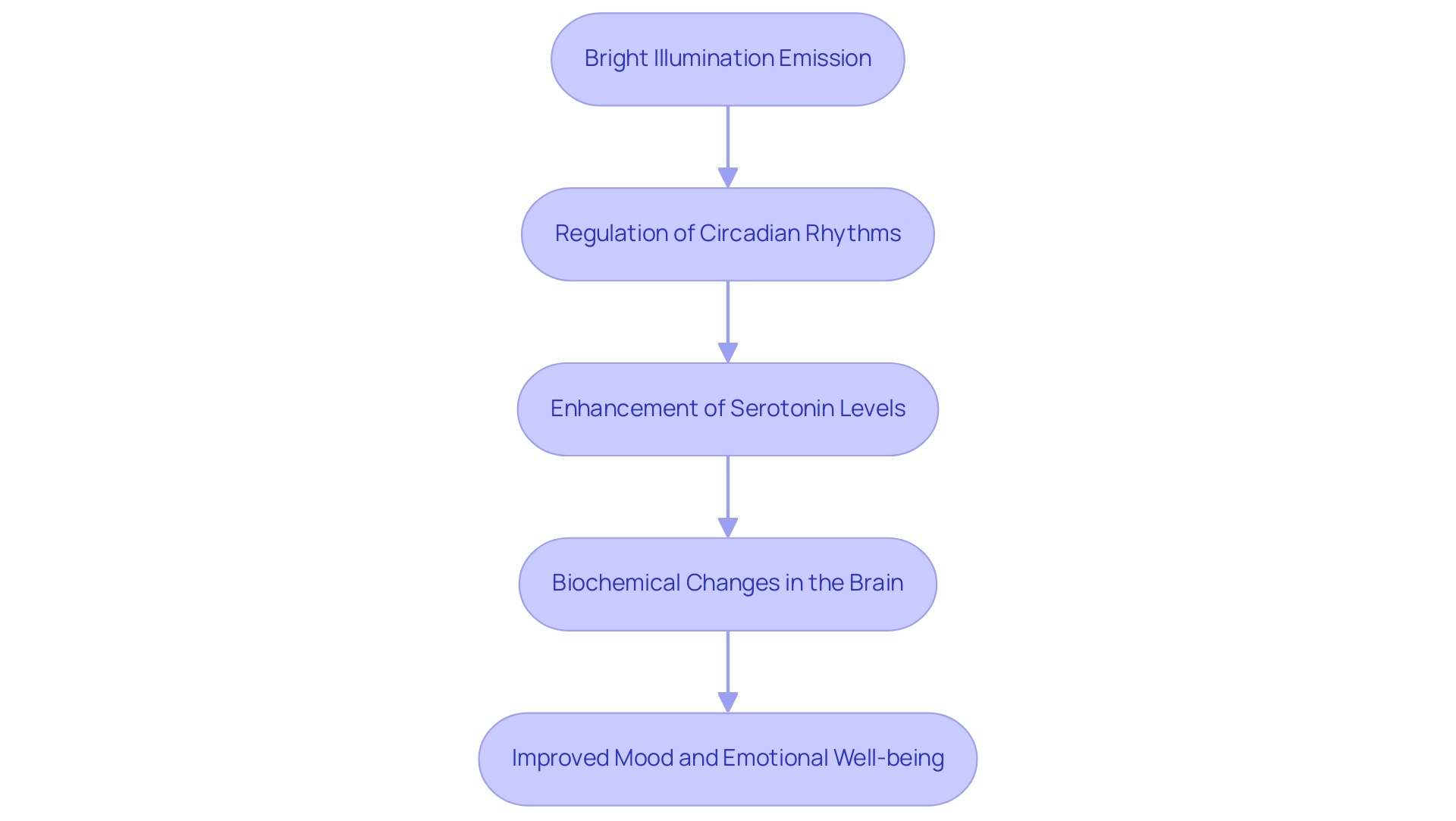
3. Choosing the Right SAD Lamp: Key Features and Recommendations
When choosing a lamp for sad disorder treatment, it is crucial to evaluate several key features to ensure optimal effectiveness. A brightness level of at least 10,000 lux is recommended, as it has been shown to significantly impact mood improvement. In fact, age significantly predicted changes in productive activity levels during treatment, with a p-value of 0.025, highlighting the importance of effective intervention for different age groups.
Moreover, a UV filter is crucial to shield the skin from harmful rays during illumination treatment sessions. Adjustable settings for brightness intensity allow users to customize their experience, catering to individual comfort and needs. The size of the lamp should also be suitable for your living or working space to maximize usability.
Notable recommendations include the Verilux HappyLight and the Carex Day-Light Classic, both of which fulfill these criteria and are supported by positive user reviews indicating their effectiveness. Furthermore, merging illumination treatment (LT) with antidepressants (AD) has shown a synergistic effect, making it a suggested first-line approach for addressing SAD manifestations. The wider uses of illumination treatment are also demonstrated by a case study on Adult Attention-Deficit Disorder (ADD), where substantial decreases in ADD indicators were noted, suggesting its efficacy beyond mood disorders.
It is essential to choose a lamp for sad disorder that is specifically created for illumination treatment, ensuring that it meets the necessary standards for addressing SAD symptoms effectively. As the saying goes,
This underscores the significance of comprehensive research and informed decision-making when investing in a therapy solution.
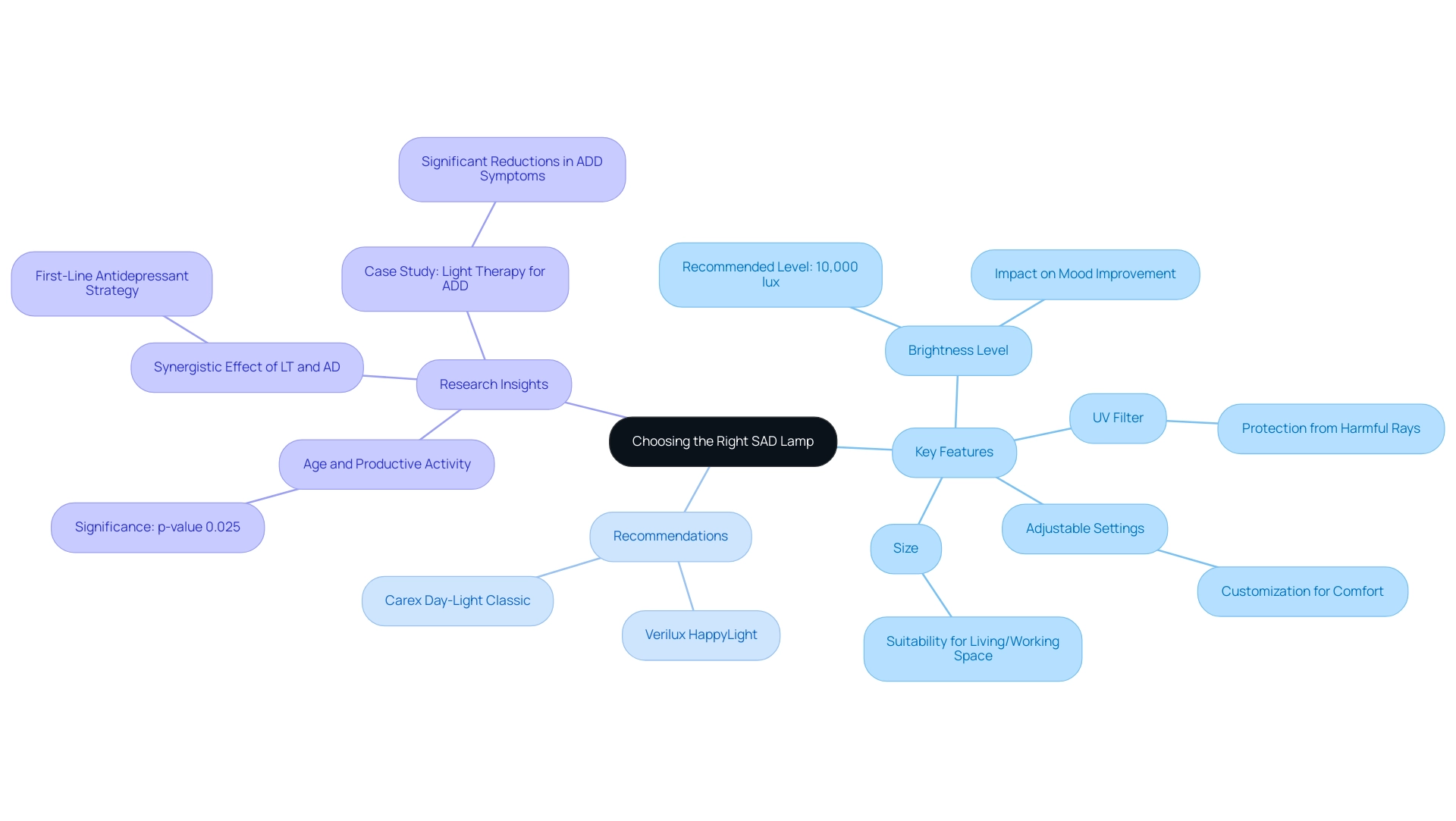
4. Using Your SAD Lamp Effectively: Guidelines and Best Practices
To maximize the effectiveness of your SAD lamp, ensure it is positioned at eye level, approximately 16 to 24 inches away from your face. For optimal results, use the lamp for 20 to 30 minutes each morning and evening, ideally within the first hour of waking. This approach is suggested as morning and evening treatments may be more effective than using either alone.
Consistency in usage is crucial; aim to engage with the lamp daily throughout the fall and winter months. It is advisable to avoid direct eye contact with the source. Instead, engage in other activities, such as reading or working, to enhance comfort while ensuring sufficient exposure.
According to Dr. Teodor T Postolache of the Mood and Anxiety Program at the University of Maryland School of Medicine:
-
Illumination therapy can lead to a significant immediate reduction in depression scores after just 20 minutes, with maximum benefits occurring at 40 minutes.
-
Common symptoms of Seasonal Affective Disorder include:
-
Low mood
-
Sleep disturbances
-
Social withdrawal
-
63% of individuals experiencing hypersomnia.
-
Clinically tested illumination boxes, which are essential for effective treatment, currently sell for approximately $150.
This structured approach not only fosters effective treatment but also aligns with best practices for light therapy in managing Seasonal Affective Disorder.
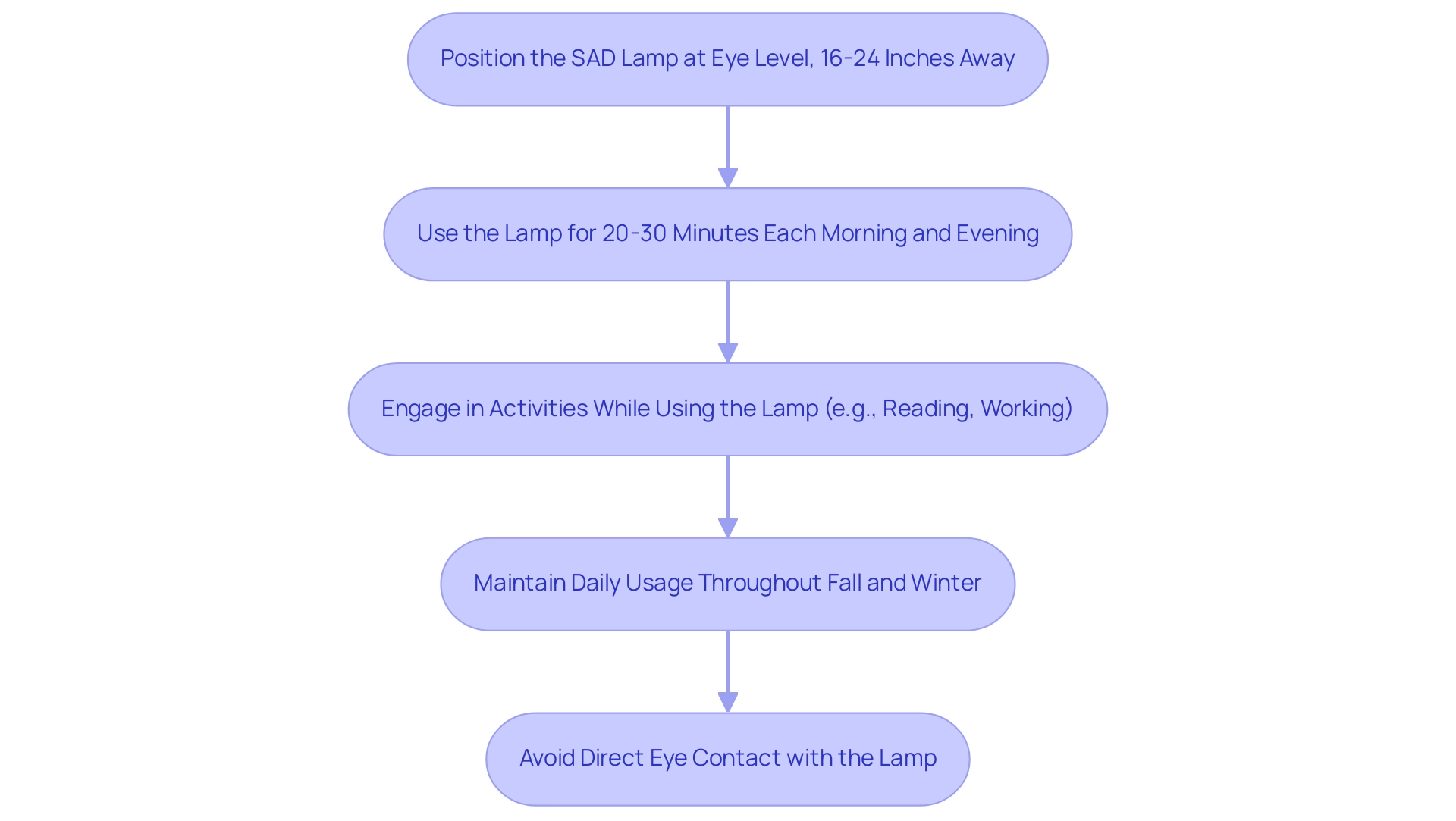
5. Next Steps and Resources for Managing Seasonal Affective Disorder
While utilizing a lamp for sad disorder represents an effective component of treatment, it is essential to consider a comprehensive approach that includes additional therapeutic options. A Generalized Severity Score (GSS) of 9 or 10 and a problem rating of at least mild can indicate the severity of Seasonal Affective Disorder (S-SAD), underscoring the importance of early intervention. Psychotherapy and medication can significantly reduce issues for many individuals.
Furthermore, lifestyle adjustments play a crucial role in managing SAD. Engaging in regular physical activity has been shown to enhance mood and energy levels, while a balanced diet rich in nutrients can support overall mental health. Adequate sleep is also vital, as disruptions in sleep patterns can exacerbate SAD symptoms.
As Norman Rosenthal suggests, planning winter trips to sunny locales before winter sets in can provide proactive measures to combat the effects of SAD. Community engagement through support groups and online forums offers invaluable opportunities for connection, allowing individuals to share their experiences and coping strategies. Importantly, untreated SAD can lead to various complications, including impaired functioning, social isolation, and increased risk of substance abuse.
For a thorough understanding and tailored advice, consulting with mental health professionals is recommended, alongside accessing reputable mental health resources that provide further information on managing SAD effectively.
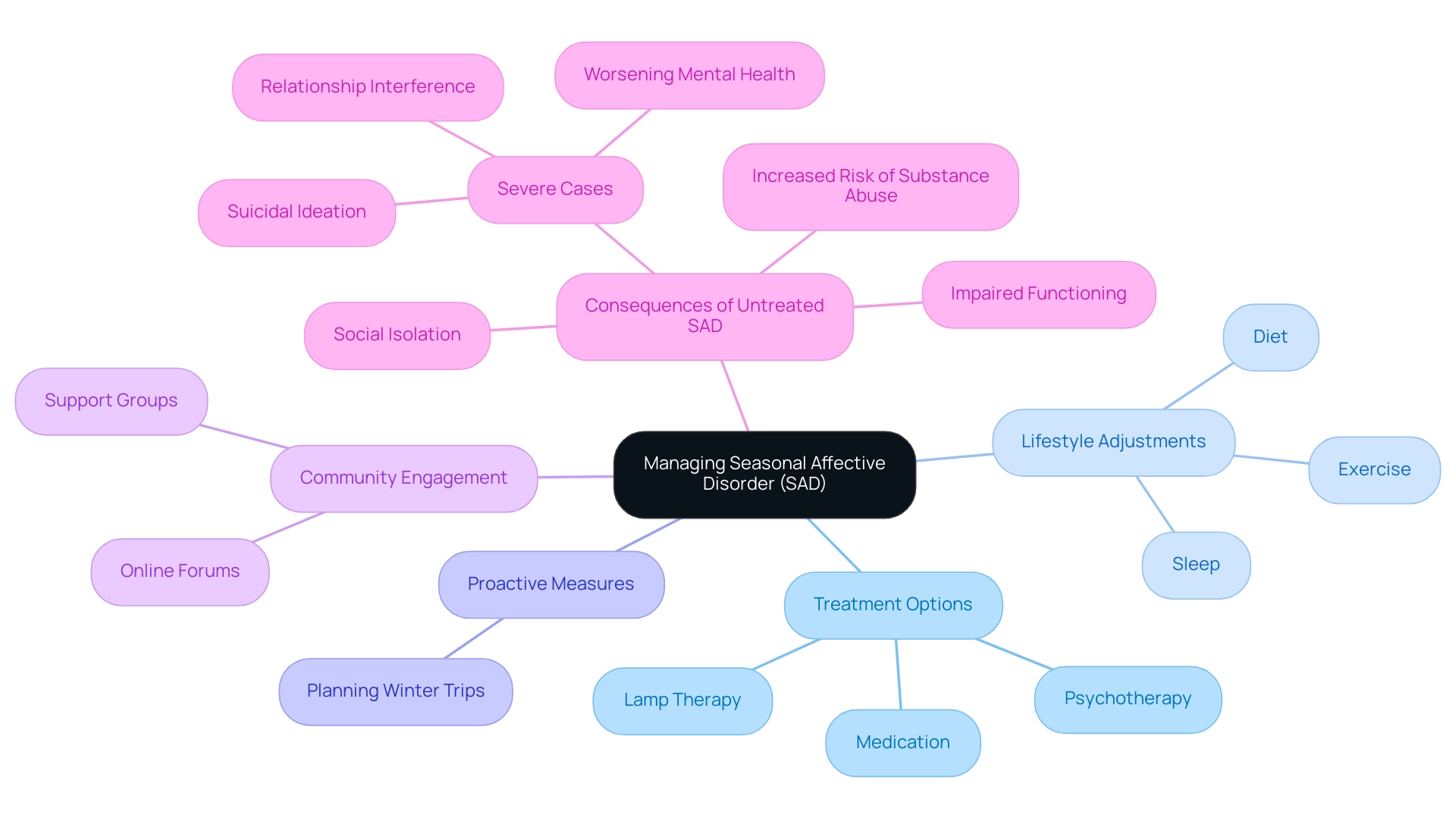
Conclusion
Seasonal Affective Disorder (SAD) is a significant mental health challenge, especially during the colder months when sunlight is scarce. Recognizing the symptoms—including persistent sadness, changes in sleep patterns, and difficulty concentrating—is vital for early intervention. Effective treatments, particularly light therapy using SAD lamps, have shown promising results in alleviating these symptoms. Research indicates that these lamps can significantly enhance mood and emotional well-being by mimicking natural sunlight and regulating circadian rhythms.
Selecting the right SAD lamp is crucial for maximizing its benefits. Key features include:
-
A brightness level of at least 10,000 lux
-
UV filters
-
Adjustable settings
Following best practices for lamp usage, including consistent daily sessions and proper positioning, further contributes to successful outcomes.
However, light therapy should be part of a comprehensive approach to managing SAD. Combining it with:
-
Psychotherapy
-
Medication
-
Lifestyle changes—such as regular exercise and a balanced diet
can create a holistic strategy for improvement. Engaging with community support and consulting mental health professionals can also provide valuable resources and encouragement. By taking proactive steps and utilizing available tools, individuals can effectively combat the challenges posed by Seasonal Affective Disorder and enhance their quality of life during the winter months.





